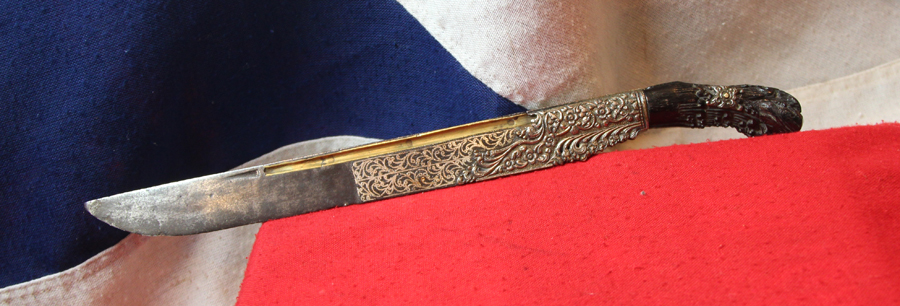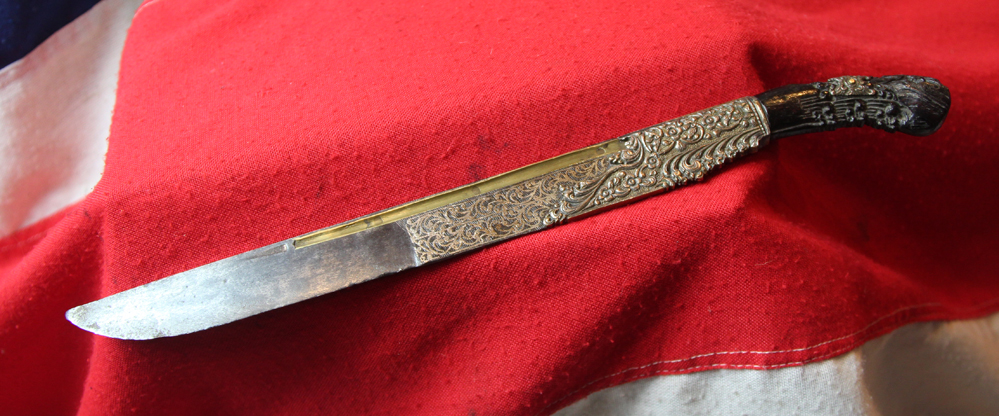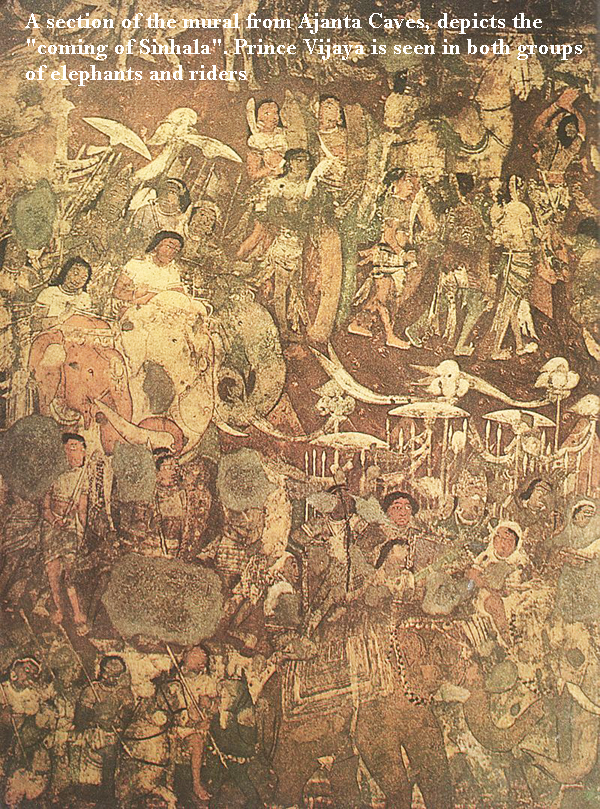A Late 1600’s Very Fine Black Coral Handled Sinhalese King’s or Noble’s Knife. A Royal Piha-Kaetta (Pihiya)
A Fine Sinhalese Knife Piha-Kaetta (Pihiya) from Sri Lanka, Late 17th early 18th Century
This Pihiya is a very well known form of early Ceylonese royal knife, with a straight-backed blade and a curved cutting edge.
The Pihiya Handle and part of the blade are beautifully and finely engraved and decorated with delicate tendrils, the powerful hilt is made out of different combinations of materials such as Gold, Silver, Brass, Copper, Rock Crystal, Ivory, Horn, Black Coral Steel and Wood. Sometimes the Gold or Silver mounts extend down halfway the blade.
Handles were made in a certain and very distinctive form, occasionally they were made in the form of serpentines or a mythical creature’s head, most similar to this stunning piece.
The Kaetta means a beak or billhook, it is a similar but larger knife to the Pihiya, it has a blade with a carved back and a straight cutting edge that curves only towards the tip.
The finest examples were made at the four workshop (Pattal-Hatara), where a selected group of craftsmen worked exclusively for the King and his court, and were bestowed to nobles and officials together with the kasthan? and a cane as a sign of rank and / or office. Others were presented as diplomatic gifts. Many of the best knives were doubtless made in the Four Workshops, such as is this example, the blades being supplied to the silversmith by the blacksmiths.
"The best of the higher craftsmen (gold and silversmiths, painters, and ivory carvers, etc.) working immediately for the king formed a close, largely hereditary, corporation of craftsmen called the Pattal-hatara (Four Workshops). They were named as follows; The Ran Kadu Golden Arms, the Abarana Regalia, the Sinhasana Lion Throne, and the Otunu Crown these men worked only for the King, unless by his express permission (though, of course, their sons or pupils might do otherwise); they were liable to be continually engaged in Kandy, while the Kottal-badda men were divided into relays, serving by turns in Kandy for periods of two months. The Kottal-badda men in each district were under a foreman (mul-acariya) belonging to the Pattal-hatara. Four other foremen, one from each pattala, were in constant attendance at the palace. Prince Vijaya was a legendary king of Sri Lanka, mentioned in the Pali chronicles, including Mahavamsa. He is the first recorded King of Sri Lanka. His reign is traditionally dated to 543?505 bce. According to the legends, he and several hundred of his followers came to Lanka after being expelled from an Indian kingdom. In Lanka, they displaced the island's original inhabitants (Yakkhas), established a kingdom and became ancestors of the modern Sinhalese people. 13 inches long overall
Code: 22534
795.00 GBP







